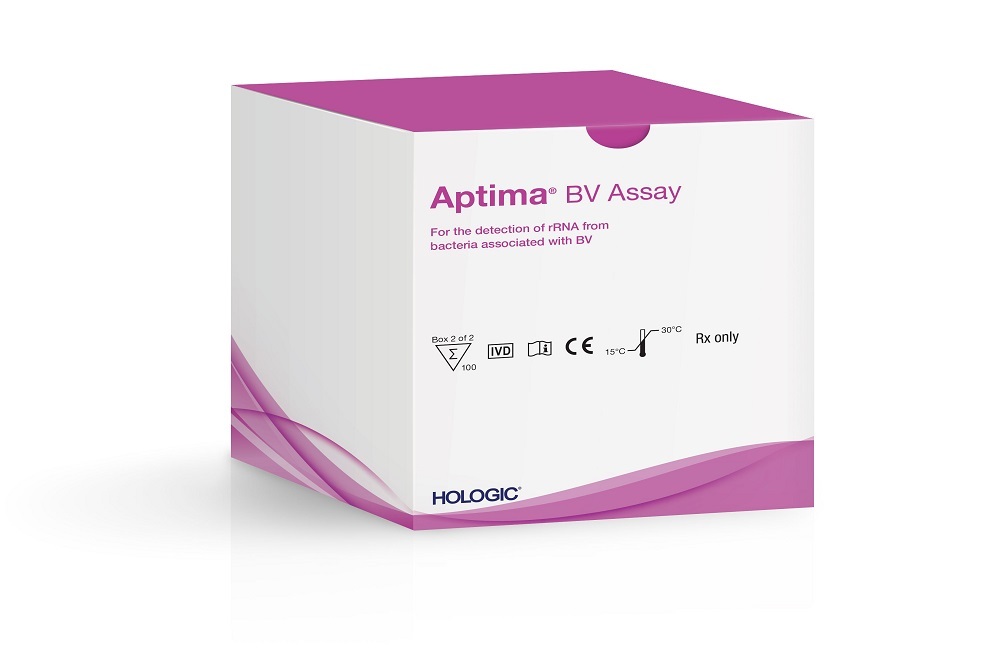
Hologic, Inc. issued the following announcement on May 29.
Hologic, Inc. (Nasdaq: HOLX) announced today that the FDA has granted clearance for its new Aptima® BV and Aptima® CV/TV assays, which provide an accurate and objective method for diagnosing vaginitis, a very common and complex health issue affecting millions of women each year.
About 90 percent of vaginitis is caused by bacterial vaginosis (BV), vulvovaginal candidiasis (Candida vaginitis, CV, also commonly known as yeast infections), or Trichomonas vaginalis (TV) infections, either individually or in combination.1,2 In fact, BV is the most common vaginal infection in the United States, affecting an estimated 21 million women ages 14 to 49 years old.3 Diagnosis can be especially complicated due to the prevalence of co-infections, as approximately 20 to 30 percent of women with BV are co-infected with Candida species.1 Traditional methods for diagnosing vaginitis (including microscopy, pH determination and Nugent scoring) are highly subjective, leading to misdiagnosis and ineffective treatment.1,2 When diagnosed using traditional methods and treated based on those subjective results, more than 50 percent of women with vaginitis experience recurring symptoms.1
“Vaginitis is one of the most common reasons women visit a healthcare provider, and Hologic’s new molecular assays have the potential to transform how these infections are diagnosed in that very first appointment,” says Dr. Edward Evantash, an OB-GYN who is medical director and vice president of medical affairs at Hologic. “The improved sensitivity and specificity of Hologic’s molecular assays over traditional methods in determining the underlying cause of vaginitis not only means identifying the right infection, but enabling the right treatment and, in turn, reducing the potential for recurrent or persistent infections.”
Unfortunately, many women self-diagnose and self-treat before visiting a healthcare provider, assuming that abnormal vaginal discharge, itching or irritation is due to a simple yeast infection. When BV or TV are left untreated or not properly treated, these infections can put women at risk for a wide variety of complications, including an increased chance of getting a sexually transmitted infection (STI) such as chlamydia or HIV, pelvic inflammatory disease, and pregnancy-related risks including premature delivery, low birth weight and infertility.1,2
Hologic’s commitment to women’s health and well-being
Building on Hologic’s commitment to women’s health, the Company’s Diagnostic Solutions division continues to make advancements in molecular testing. It provides state-of-the-art molecular testing for cervical cancer and the detection of most STIs, including chlamydia, gonorrhea, Mycoplasma genitalium, trichomoniasis, HIV, HPV and hepatitis B and C. “With these latest FDA clearances, we now have 16 assays in the U.S. that help advance women’s health and more,” said Tom West, Division President, Diagnostic Solutions. “This suite of new molecular tests for vaginitis is a prime example of Hologic’s investment in technologies that introduce greater accuracy – and peace of mind – for laboratorians, healthcare providers and ultimately the women we serve.”
About vaginitis, a very common and complex health issue
Vaginitis is a general term for disorders of the vagina caused by infection, inflammation or changes in the normal vaginal flora. Symptoms of vaginitis can vary but may include vaginal discharge, odor and itching; pain during urination or sexual intercourse; or spotting or bleeding, among others. The three causes of vaginitis that Hologic’s new FDA-cleared assays address – BV, yeast infections and TV – are similar and often misdiagnosed, which can lead to improper treatment. However, each cause of vaginitis has its own characteristics, consequences and treatment recommendations.
- Bacterial Vaginosis (BV) – BV is the most common vaginal infection and occurs when there is an imbalance of naturally occurring bacteria in the vagina, and women typically experience an uncomfortable vaginal discharge.1 Left untreated, BV can increase a woman’s chance of miscarriage, preterm birth and getting an STI, such as chlamydia, gonorrhea, herpes simplex virus (HSV), or HIV.1
- Vulvovaginal Candidiasis (Candida vaginitis, CV) – Commonly known as a yeast infection, vulvovaginal candidiasis is a result of an overgrowth of fungal organisms, usually Candida albicans. Yeast infections caused by other Candida species, such as Candida glabrata, can be more difficult to treat, and may require more aggressive therapies.2 The Aptima CV/TV assay differentiates between these specific Candida species, which better informs appropriate antifungal treatment.
- Trichomonas vaginalis (TV) – Sometimes referred to as “trich,” TV is the second most common STI in the U.S. Left untreated, TV infection can lead to premature labor and low birth weight babies.2 TV is also associated with an increased risk of HIV acquisition and prolonged HPV infection.2 The CDC recommends testing for TV in all women seeking treatment for vaginal discharge. The CDC also recommends the use of nucleic acid amplification tests (NAAT) for detecting TV.4 Because TV is an STI, a woman’s partner also needs to be tested and treated to prevent reinfection.
Original source can be found here.




